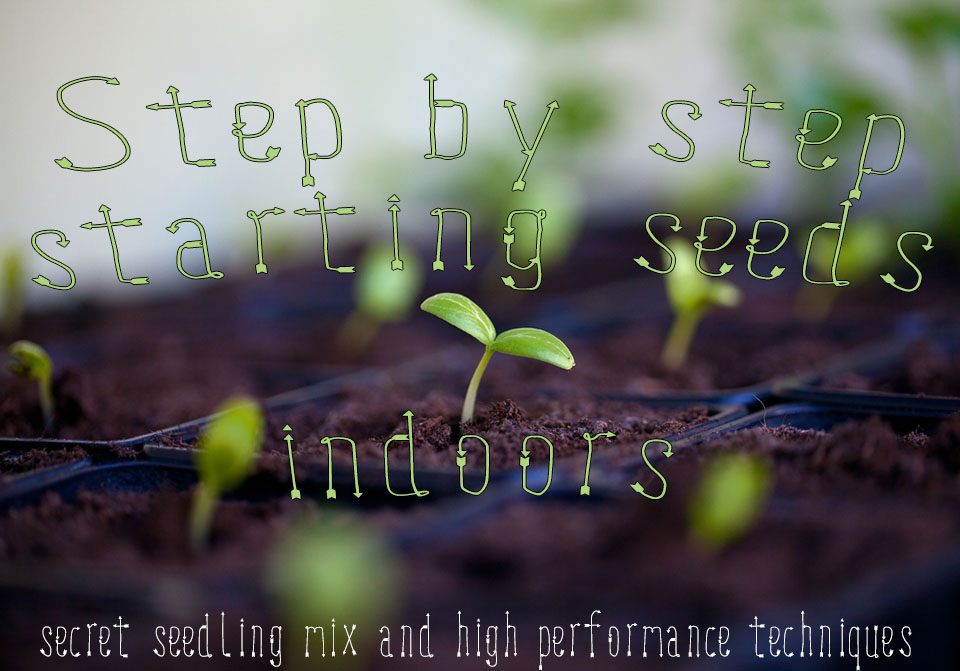
Starting your seeds indoors can be easy and highly successful if you take the time to learn some high performance methods. You will save so much time and energy if you know when to start your seeds and the temperature your seeds would like to be germinated. In the summer I start my spinach in the fridge because it likes to be sprouted at a cooler temperature. Keeping track of the timing of your seeds sprout is another key to starting your seeds indoors. So pull out an old journal and designate it as your garden journal so you can keep track of timing and the results you get from your different experimentations. It will be important to include this table that describes which plants are easy and fussy transplants as well as those that you will never transplant.
| Easy Transplants | Fussy Transplants | No Transplant |
|---|---|---|
| Artichokes | Beets | Beans |
| Broccoli | Cucumbers | Soy Beans |
| Brussels Sprouts | Gourds | Carrots |
| Cabbage | Melons | Corn |
| Cauliflower | Pumpkins | Popcorn |
| Celery | Spinach | Garlic |
| Eggplant | Squash | Kohlrabi |
| Arugula | Peas | |
| Bok Choy | Potatoes | |
| Mustard Greens | Radishes | |
| Collard Greens | Turnips | |
| Kale | ||
| Leeks | ||
| Lettuce | ||
| Onions | ||
| Scallions | ||
| Shallots | ||
| Peppers | ||
| Okra | ||
| Swiss Chard | ||
| Tomatoes |
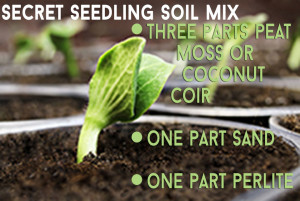
Now let’s plant some seeds! You can use just about any container to germinate your seeds in; the only requirement is that it has the ability to drain. The key to successfully germinating your seeds is in the soil mix. In this training video I will give you my family’s secret seedling mix. My parents used this secret seedling mix to start all of the plants in their greenhouses for as long as I can remember. This soil mix is excellent for starting all seeds because it does not have added nutrients. Flower seeds and certain other fussy seeds will not germinate when there are certain nutrients in the soil. Plants do not need to feed until they have their first set of adult leaves. To bypass the problem of not having too much nutrients we would add a layer of about ¼ inch of compost or worm casings at the bottom of the pot so the plants get food when they are big enough to need it. Join me in one of our greenhouses in this next Secret of Seeds Series Episode: Starting Seeds Indoors.
10 Steps to Starting Seeds Indoors in a High Performance Garden Style:
1. Select your seeds, container and have on hand the seed packet or seed catalog to know what temperature you will have the best germination rate as well as the time it should take for germination.
2. Layer ¼ inch of compost or worm casings at the bottom of your container.
3. Fill the container with the secret seedling soil mix leaving room to cover the seeds with soil.
4. Plant the seeds at the depth specified on your seed packet or seed catalog. Or use this general rule to find the best planting depth. Plant the seed 3 times its width deep in the soil. A cucumber seed that is about 1/8 inch wide will be planted about 3/8 of an inch deep.
5. Sift the required amount of soil on top of your seeds.
6. The easiest way to water your seeds without disturbing them is to soak the whole pot in a tub of water. Rest your container in a bugger tub filled with about 2-3 inches of water. The soil will wick the water without disturbing the seeds. If you have to water over the tray be sure to do so in a way that does not disturb the seeds.
7. Remove the tray and set on a rack to drain and create a label for each container with the plant name and the date you planted them. (It would be a good habit to also track this in your garden journal).
8. Cover the soil with plastic wrap or a plastic dome with some holes poked in it for air. This will help to retain the moisture in the soil. If you notice the soil is drying out before the seeds sprout moisten them again.
9. Place your seeds in an area that will provide the proper temperature for them to germinate. Most seeds like to germinate between 65-70 Degrees Fahrenheit. A great place to germinate your seeds is on top of your refrigerator. I would not recommend window sills as a place to have your seeds germinate. The temperature tends to fluctuate too much for what the plants need.
10. Once your plants have germinated take the plastic cover off and give them a drink by soaking them in the tub again. Put them in a bright place and let them continue growing.
At the farm we converted a store freezer into a germination chamber. You can watch our Mini Farm tour to learn how we germinate up to 143 trays of seedlings at a time.
Now go start your easy to transplant seeds! Next week we will learn the best way to start your fussy transplants indoors. What seeds are you starting this week? Leave your answers in the comments below!
Until the next High Performance Garden Training Video may your garden be easy, fun, productive and always organic!
Lynn Gillespie
Email Lynn your questions about starting seeds. Let’s get your seeds started off on the right foot!
Back to the HPG Community Posts

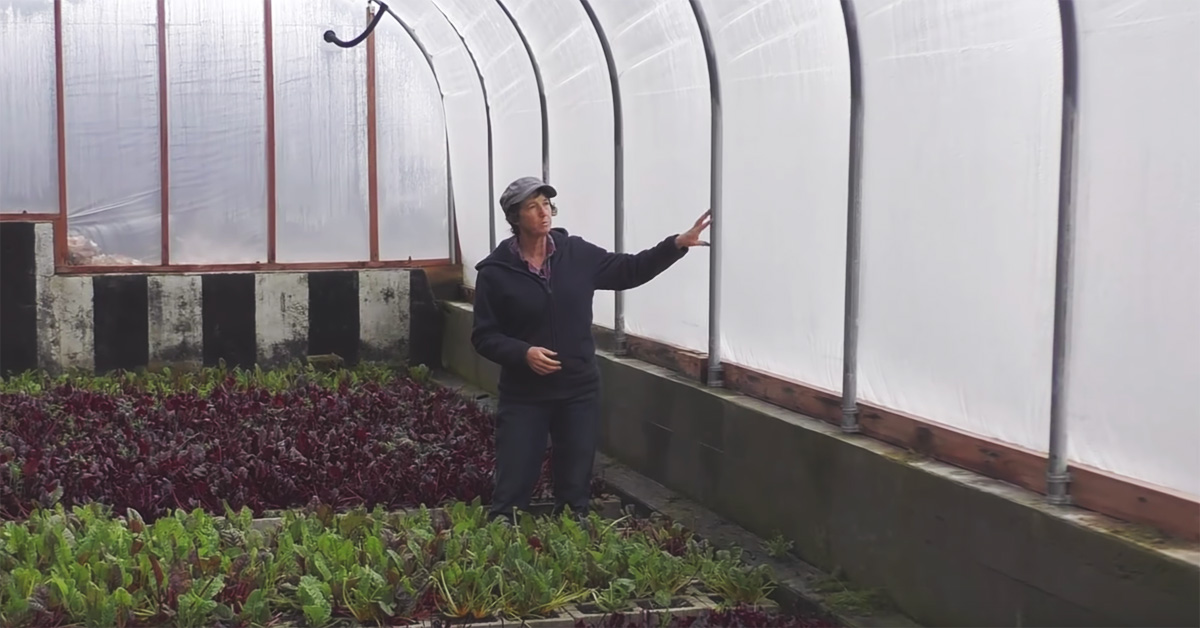
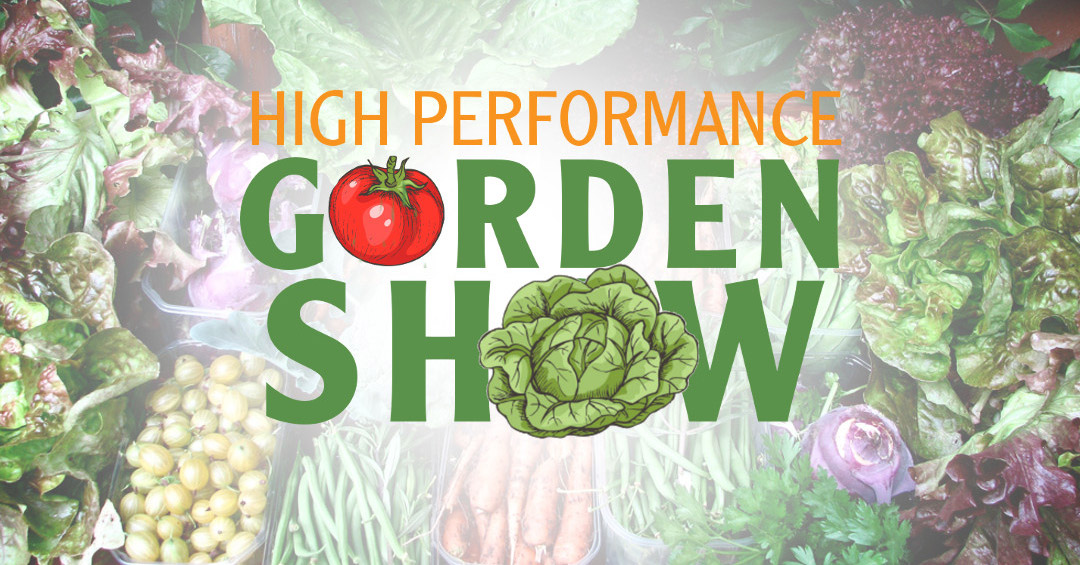
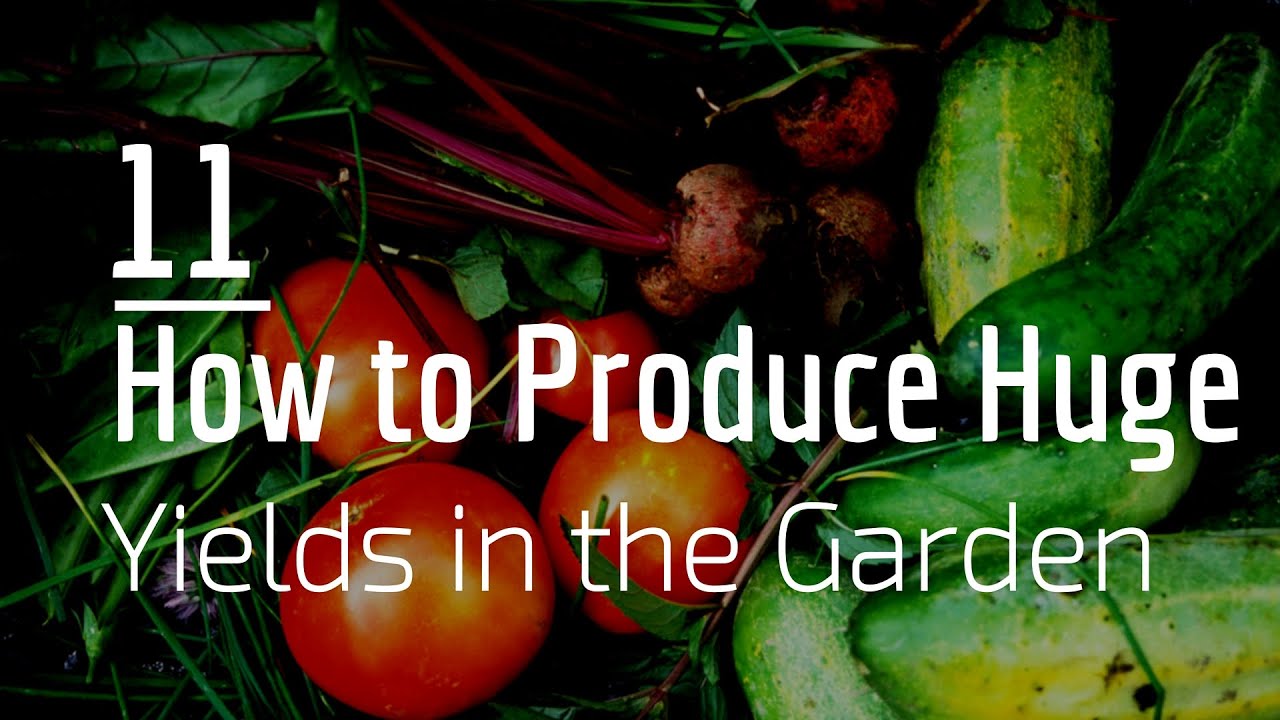
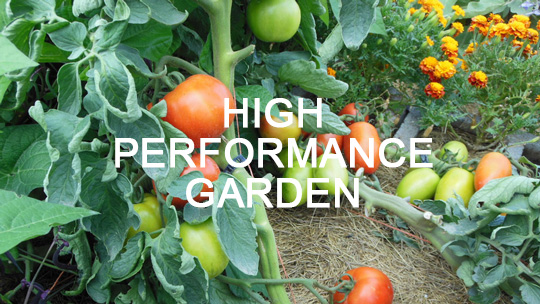
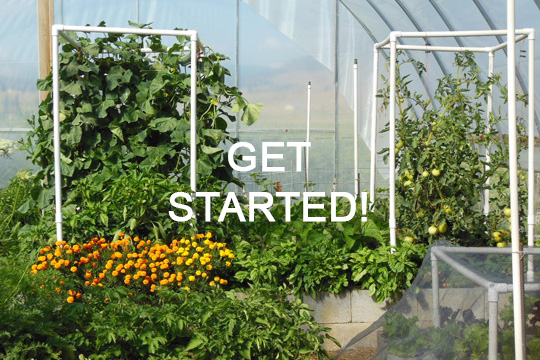

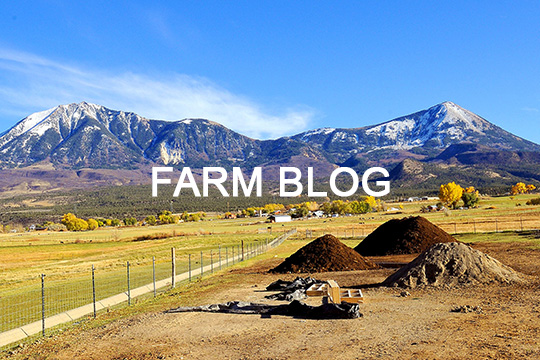
For step 6, what if we don’t have a tub – what’s an effective, alternative way to water the seeds?
Another great option is to use a watering can and gently water on top of your trays. If you would like to be there all day and have a fine mist of water you can use a spray bottle. Just be careful to not disturb the seeds if you can help it!
Greetings! You provided some very hefupll advice within this post and video for our gardening friends!It is the little changes that produce the most significantchanges. Thanks a lot for sharing!
I usually water with a spray bottle, but since not home all day, still wound up with leggy seedlings. Thank you for this very helpful video.
thanks for the info. i’m starting lettuce and arugula this week.
Good luck on starting your lettuce and arugula! Please feel free to send any questions you might have!
My lettuce is still leggy. I have the grow light on about 16 hours. My house is set at 68 degrees so maybe that is the issue. I need more warmth.
My guess is that the plants are not close enough to the light or the light is not strong enough. Temp is fine for the lettuce plants.